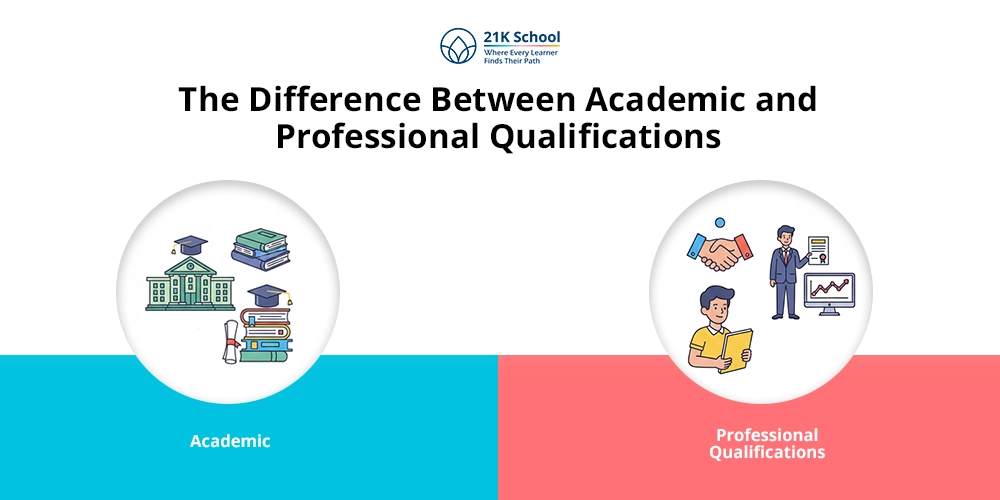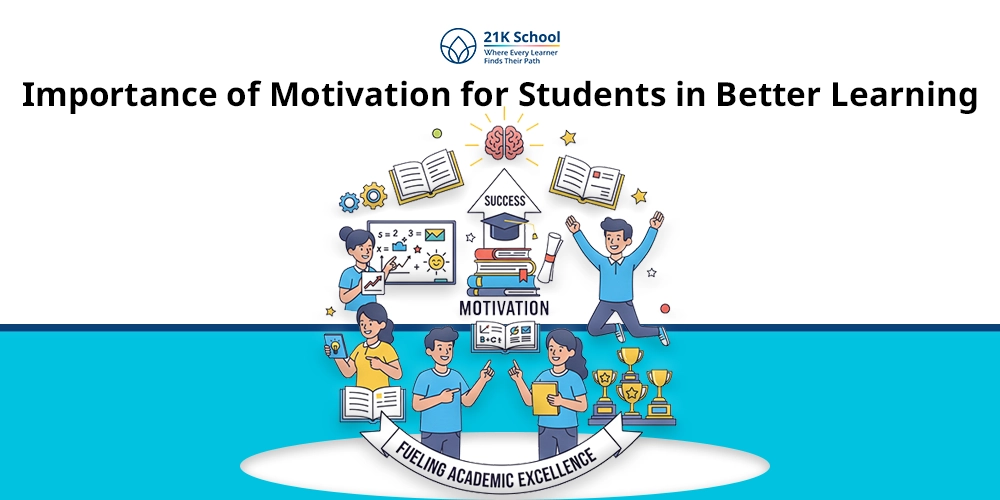
In every budding student, there is the potential to become a leader. Leadership skills enable the student to become ready for tomorrow.
If you’re a teacher or a parent, you play a huge role in nurturing children early to help them acquire leadership abilities.
You can help your child become resourceful by teaching them leadership. They can work with other people and motivate them in any scenario.
Contents
- What Are Leadership Skills?
- Why Are Leadership Skills Important for Students Growth?
- Top 10 Strategies to Develop Leadership Skills in Students
- Strategy 1: Teamwork and Collaboration
- Strategy 2: Encourage Participating in Group Activities
- Strategy 3: Focus on Communication Skills
- Strategy 4: Boost Confidence through Dialogues
- Strategy 5: Learn to Respond Nicely
- Strategy 6: Learn Negotiation Skills
- Strategy 7: Decision-Making Skills
- Strategy 8: Understand the Consequences of Decision
- Strategy 9: Planning Routines
- Strategy 10: Effective Planning and Brainstorming
- How Can School Help in Developing Leadership Skills in Students?
- How Can Parents Help in Developing Leadership Skills at Home?
- How to Include Leadership Activities for Students?
What Are Leadership Skills?
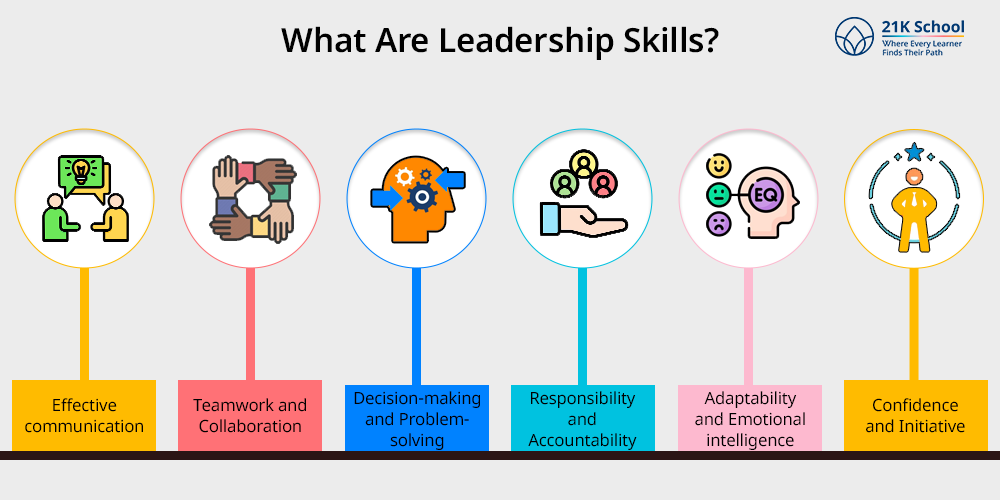
The term leadership skills implies a list of characteristics that helps people lead, direct and motivate others to reach shared objectives. For students, these skills include:
- Effective communication
- Teamwork and Collaboration
- Decision-making and Problem-solving
- Responsibility and Accountability
- Adaptability and Emotional intelligence
- Confidence and Initiative
Significantly, leadership is not about control or authority it’s about inspiring peers, and making moral decisions in adverse circumstances.
When students have powerful leadership abilities, they will tend to exhibit initiative in class. They also mediate conflicts, and participate in the group tasks meaningfully.
Why Are Leadership Skills Important for Students Growth?
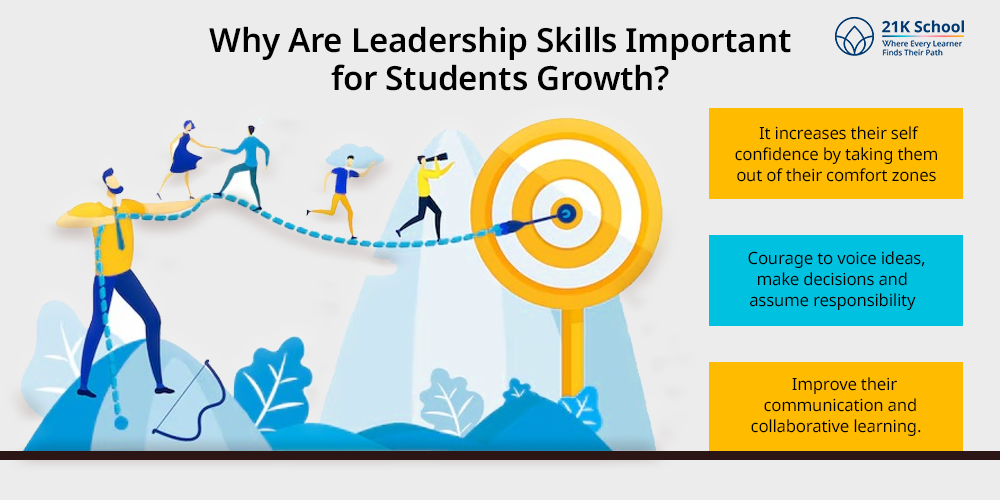
The facilitation of leadership skills ability forms an integral part of the growth of the students as a whole. Firstly, it increases their self confidence by taking them out of their comfort zones and making them believe in themselves.
Relationships formed with leadership develop the courage to voice ideas, make decisions and assume responsibility for results in students.
These are also growth experiences that improve their communication and collaborative learning.
It would be foolish to say that these skills are essential not only when in the classroom setting but life outside schools.
It is also seen that those who get involved in leadership activities are more likely to do well academically. This is because they are involved in their learning more, and more likely to stick to the task.
Leadership builds empathy and cooperation, teaching students to respect all diverse thinking and to work toward mutual, inclusive goals.
Therefore, the leadership development makes the students become thoughtful good citizens who are ready to instigate change in their communities.
Top 10 Strategies to Develop Leadership Skills in Students
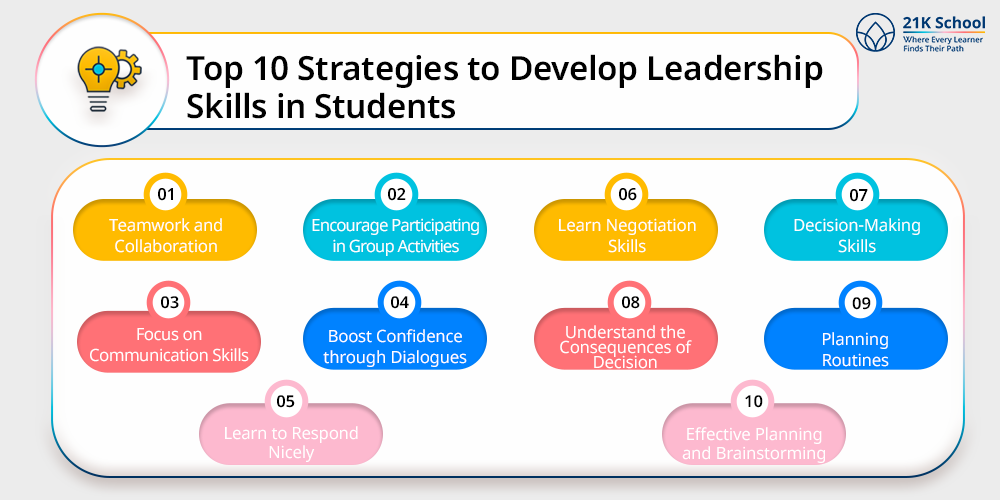
Here are ten strategies through which good leadership qualities can be instilled among learners:
Strategy 1: Teamwork and Collaboration
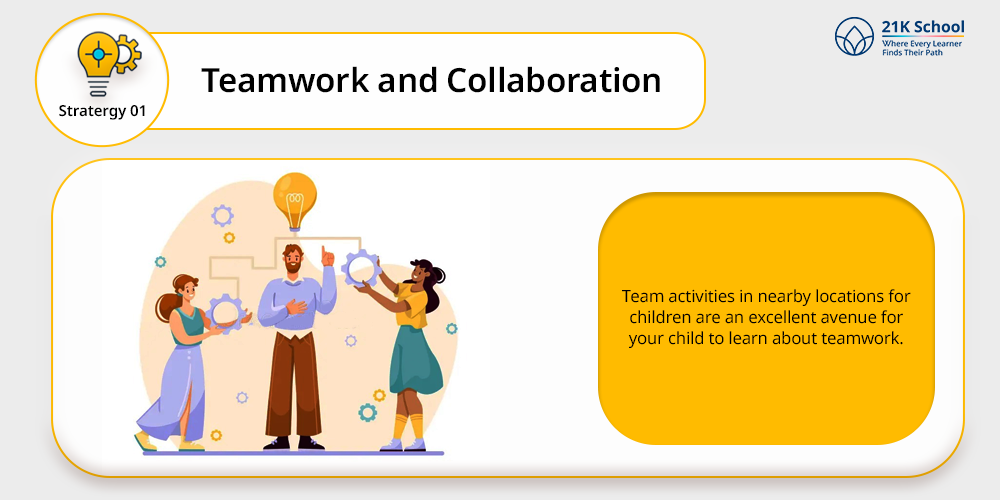
Team activities in nearby locations for children are an excellent avenue for your child to learn about teamwork.
If you’re a parent of a homeschooler , you can take your child to a nearby park and encourage them to play with others.
Strategy 2: Encourage Participating in Group Activities
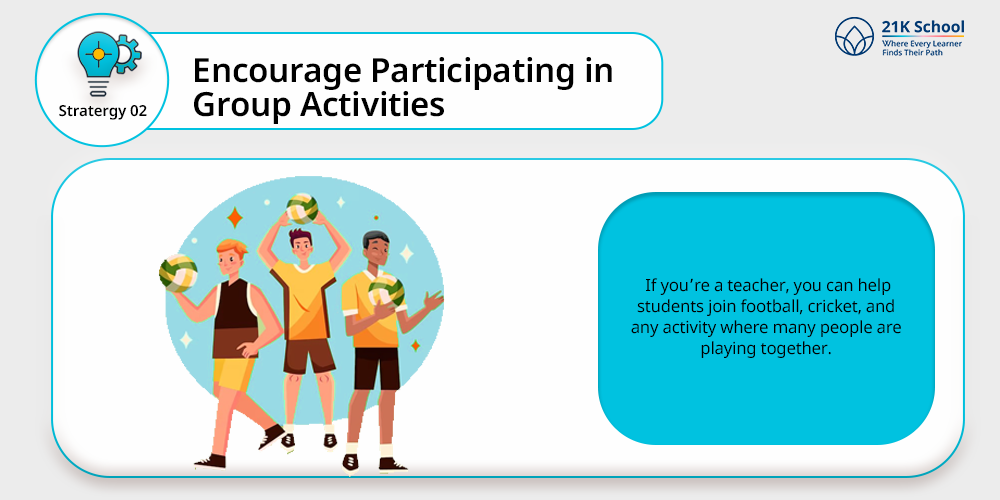
Similarly, if you’re a teacher, you can help students join football, cricket, and any activity where many people are playing together.
This can inspire them to take action and use leadership qualities to guide others.
Strategy 3: Focus on Communication Skills
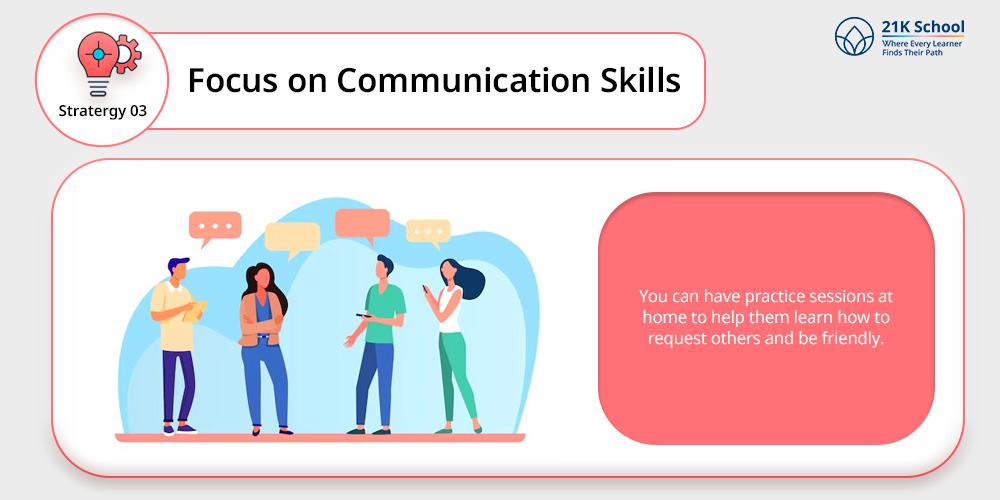
Once in any team, you must help them communicate better. You can have practice sessions at home to help them learn how to request others and be friendly.
Strategy 4: Boost Confidence through Dialogues
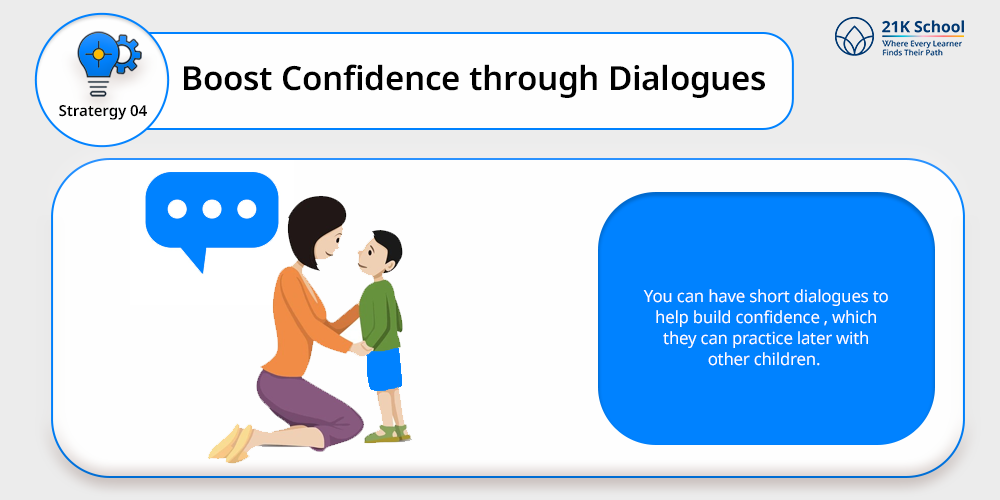
You can have short dialogues to help build confidence , which they can practice later with other children. Once they are at ease with speaking with others, they are more likely to express themselves.
This is the initial stepping stone through which they can show leadership qualities that make them take more responsible team roles.
Strategy 5: Learn to Respond Nicely
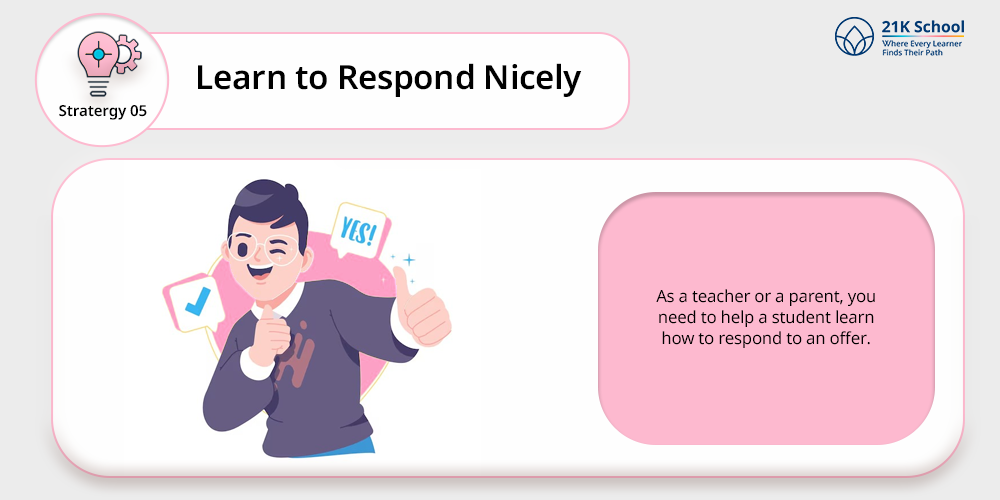
As a teacher or a parent, you need to help a student learn how to respond to an offer. Once they understand the best way to present a proposal, you can ask them to do the same.
Strategy 6: Learn Negotiation Skills

You can teach them to go beyond a simple yes or no against an offer. This can help them learn the art of negotiation.
As a result, when communicating with others, they can implement a similar strategy that can inhabit leadership.
Strategy 7: Decision-Making Skills
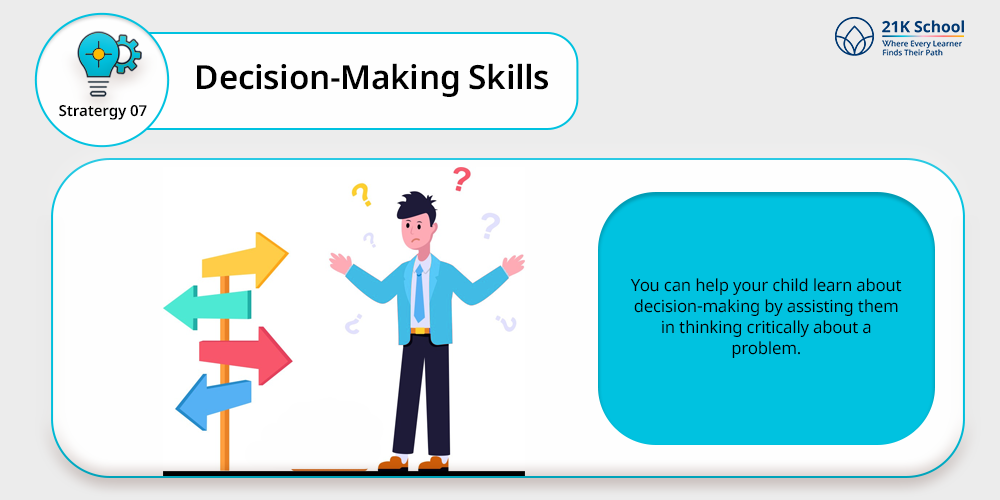
One of the essential qualities of a good leader is to make quick decisions. You can help your child learn about decision-making by assisting them in thinking critically about a problem.
You may provide them with everyday issues such as taking a subject, thinking about how to study, and more so that they are able to make decisions and feel confident.
Strategy 8: Understand the Consequences of Decision
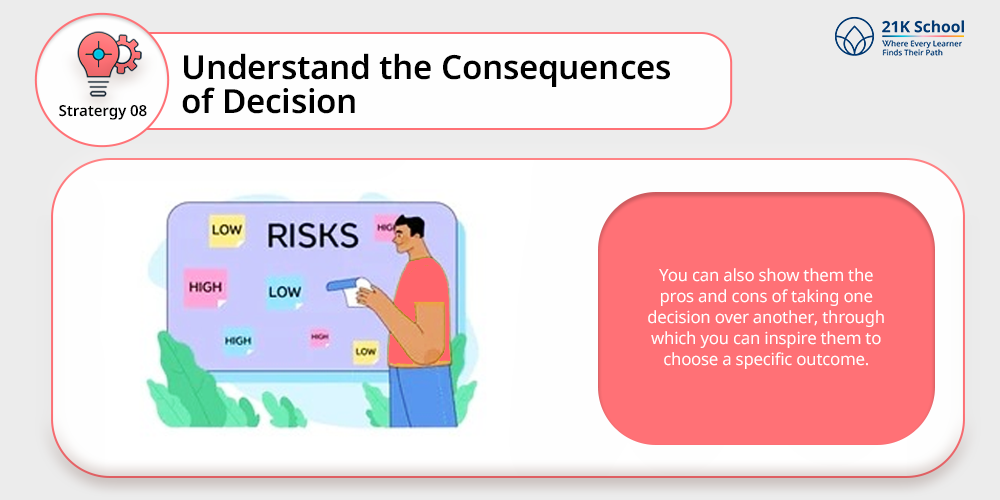
You can also show them the pros and cons of taking one decision over another, through which you can inspire them to choose a specific outcome.
This can help build mental decision-making capability, which is essential for a leader.
Strategy 9: Planning Routines
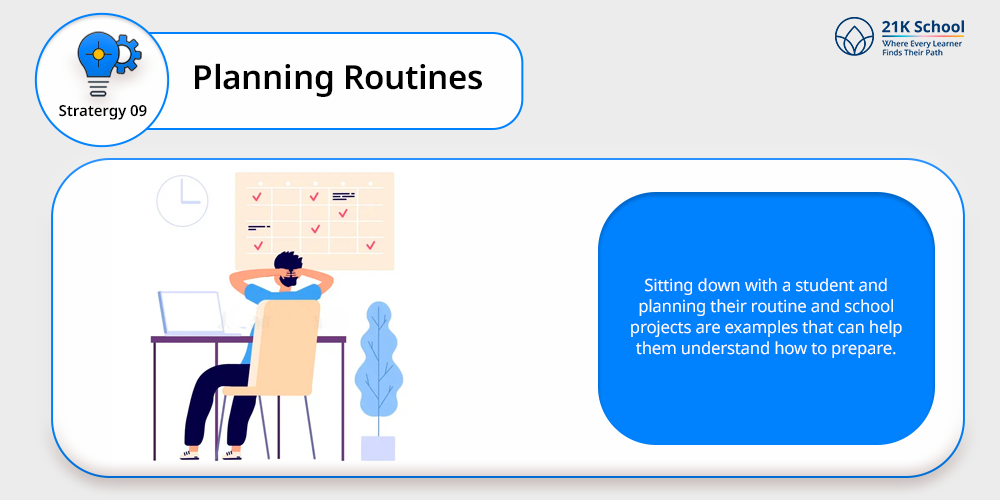
Sitting down with a student and planning their routine and school projects are examples that can help them understand how to prepare.
You, as a teacher, can help students think about their future careers, which can help them lead better lives.
Strategy 10: Effective Planning and Brainstorming
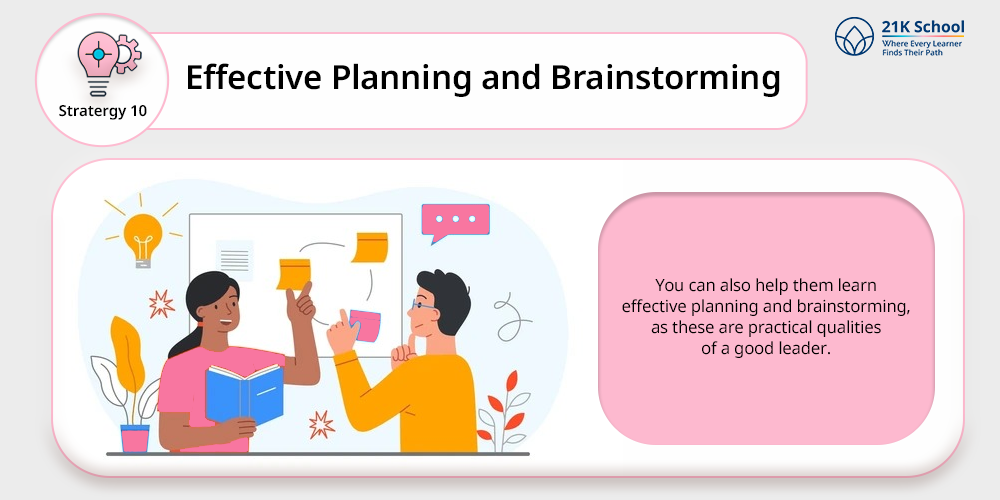
You can also help them learn effective planning and brainstorming, as these are practical qualities of a good leader.
Using such skills, they can delegate smaller tasks to family members and learn to work as a whole.
Everyone has the potential to be a leader and learning how to become one starts with instilling leadership qualities in students.
By teaching them how to take the initiative, handle difficult situations and build relationships, you can help equip them with the tools for the jobs of the future .
With these skills in their toolbox, they will be able to rise to the challenge and make their mark on the world.
With guidance and encouragement, we can ensure that our students become the confident and booming leaders of tomorrow. So let’s take the time to help them develop these essential qualities!
Also, read Education That Empowers Is Education For Life .
How Can School Help in Developing Leadership Skills in Students?
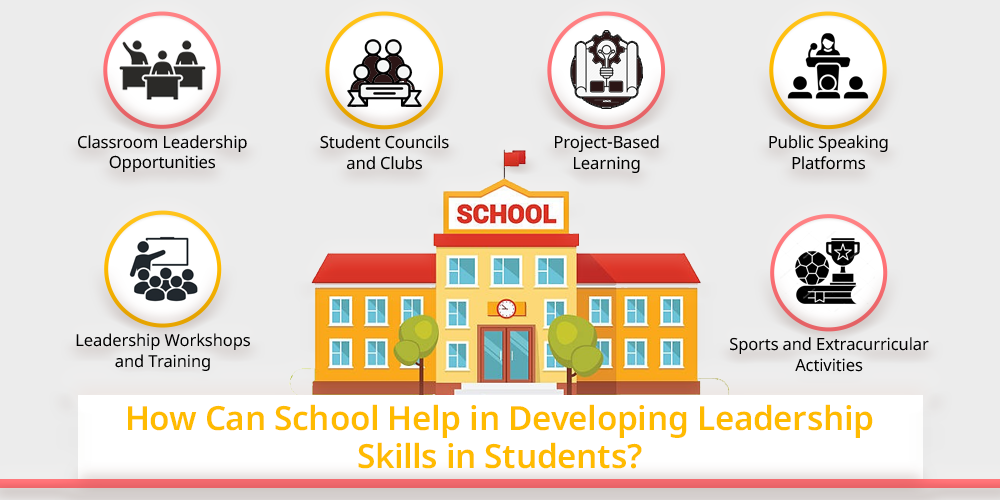
Schools are a critical institution in leadership development. These are the effective ways of doing it:
- Classroom Leadership Opportunities: Assigning leadership opportunities like class monitor, online group project boss, peer-mentors can instill a sense of responsibility in students. It gives them the chance to lead in small settings and prepare children for the future
as leaders.
- Student Councils and Clubs: Promote involvement of children in student councils, debates’ teams and schools’ clubs in your institutions. This will help them understand their capabilities outside of their classes and teach the importance of teamwork.
- Project-Based Learning: Project-based learning allows students to direct group tasks, thus promoting planning, delegation and performing in real life scenarios. These activities assist in developing students’ leadership qualities and boost their confidence.
- Public Speaking Platforms: Bring speech competition, assemblies or storytelling sessions into extracurricular activities of your school curriculum to help build confidence. Such students will prove themselves in the outer world as great problem-solvers.
- Leadership Workshops and Training: Set up special sessions of leadership workshops to educate loneliness, team management and ethically right decision making. These kinds of training assist students in excelling their future careers and relationships.
- Sports and Extracurricular Activities: Teams in sports and drama clubs, as well as groups in music, encourage associations, discipline, and leadership in pressure creating conditions. Participation of students in such activities fosters personality development in them.
Here are some tips for personality development for students
How Can Parents Help in Developing Leadership Skills at Home?
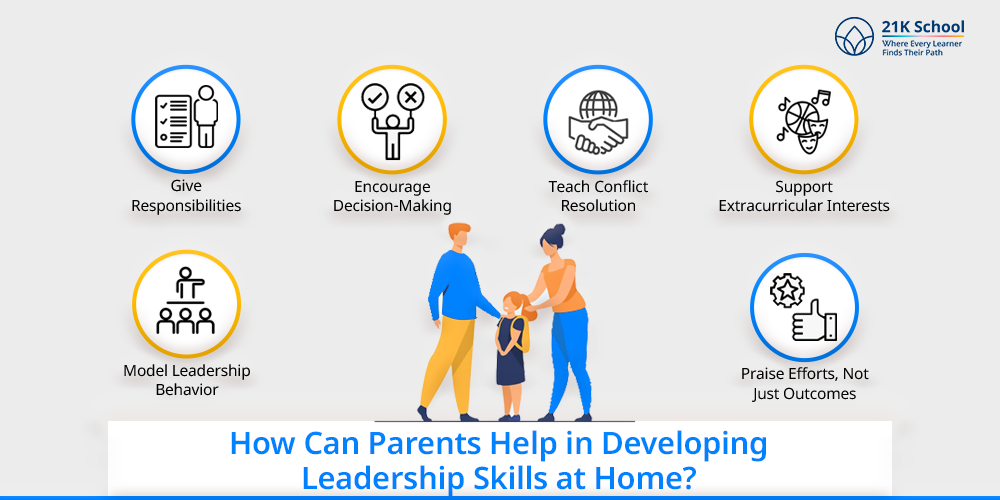
Parents are children’s first leaders. Consider the following way of supporting the leadership development:
- Model Leadership Behavior: Parents are the closest role-models for children. Show respect for integrity, problem solving and communication at home.
- Give Responsibilities: Owe them age-wise responsibilities such as room cleaning or grocery list shopping. Allocating such tasks from an appropriate age will teach them responsiveness.
- Encourage Decision-Making: Allow children to make the small choices that will increase confidence in their judgment. Let them present their views on a certain topic when having discussions as a family.
- Teach Conflict Resolution: Healthy communication and love from home escalates the process of conflict-resolution in children. Help them solve sibling disputes or friend challenges with empathy and honest argument.
- Support Extracurricular Interests: Sign up for community groups, clubs, or creative programs with others for your children. While exploring their personal interests, they would also build healthy relationships with their friends.
- Praise Efforts, Not Just Outcomes: Do not let your child feel undervalued, even if they don’t come first. Instill the value of the importance of journey, rather than just outcomes. Praise and motivate them.
How to Include Leadership Activities for Students?

The introduction of leadership activities at school and home gives the students an opportunity to apply their skill in interesting and meaningful ways.
1. A Group Project Leader
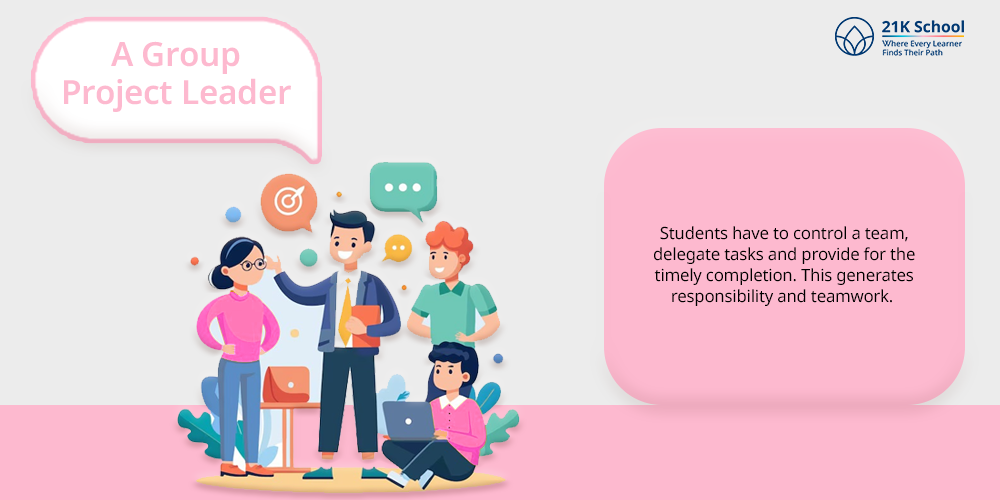
A useful strategy is balancing a group project leader with a student. In this capacity, students have to control a team, delegate tasks and provide for the timely completion. This generates responsibility and teamwork.
Teachers can develop a checklist and leave the student to handle its implementation. To improve the experience, rotation of leadership from one student to the next should be done.
It enables all students to have a chance to be a leader and observe how his predefined actions are done.
2. Conducting Mock Elections

Another effective activity is holding a mock election for the student council campaign. Students make speeches, design posters and bring their ideas to their classmates, before a vote.
This is also beneficial for learning public speaking skills, democratic values meeting, the value of trust and persuasion.
Teachers may also guide this activity in the form of the guidelines and feedback sessions making it a positive learning environment.
3. Taking Peer Teaching Sessions
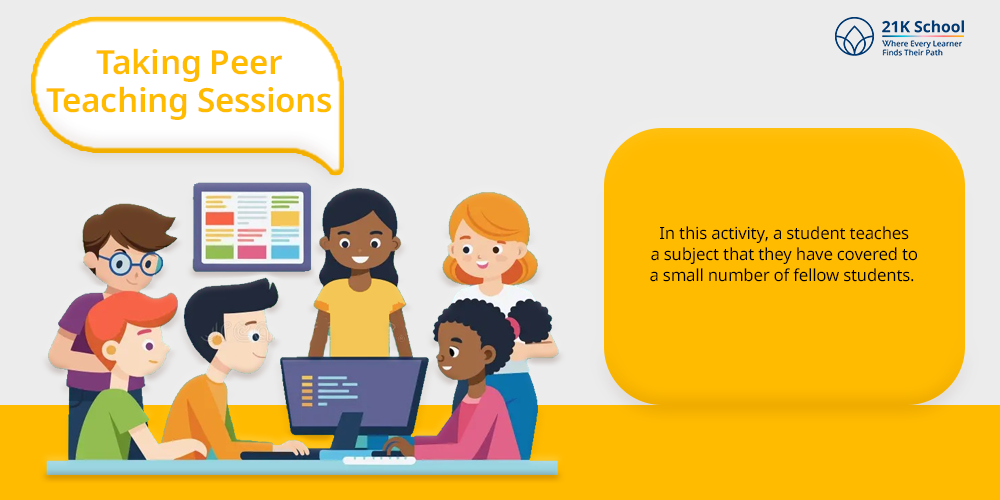
Another interesting form is the peer teaching session. In this activity, a student teaches a subject that they have covered to a small number of fellow students.
This activity teaches communication, patience, and empathy as students must know their peers’ needs and change accordingly. Teachers can guide lesson planning and provide constructive feedback later to improve teaching skills.
4. Community Service Projects
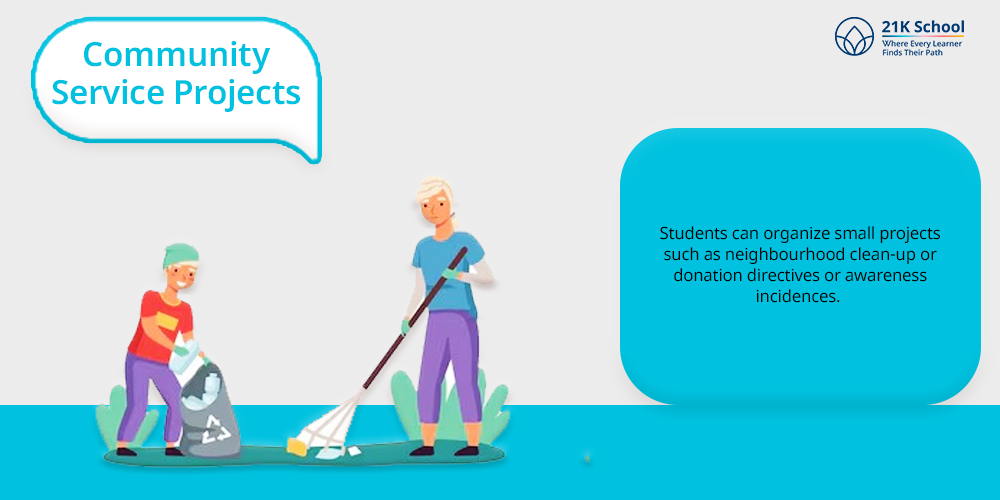
The community service projects provide a practical opportunity to learn leadership. Students can organize small projects such as neighbourhood clean-up or donation directives or awareness incidences.
These projects teach social responsibility, time management skills and team leadership. By getting the students to present their results to the class afterwards, we strengthen their sense of achievement.
5. Leadership Journals

Leadership journals are an easy yet effective way to facilitate self awareness. Students may write weekly on how they led a moment or how they missed a chance to do so.
Phrases such as ‘What did I lead today?’, or ‘How did I solve a problem this week?’ help them see places they have grown. Such a continuous reflection process assists to create a conscious leadership mindset.


